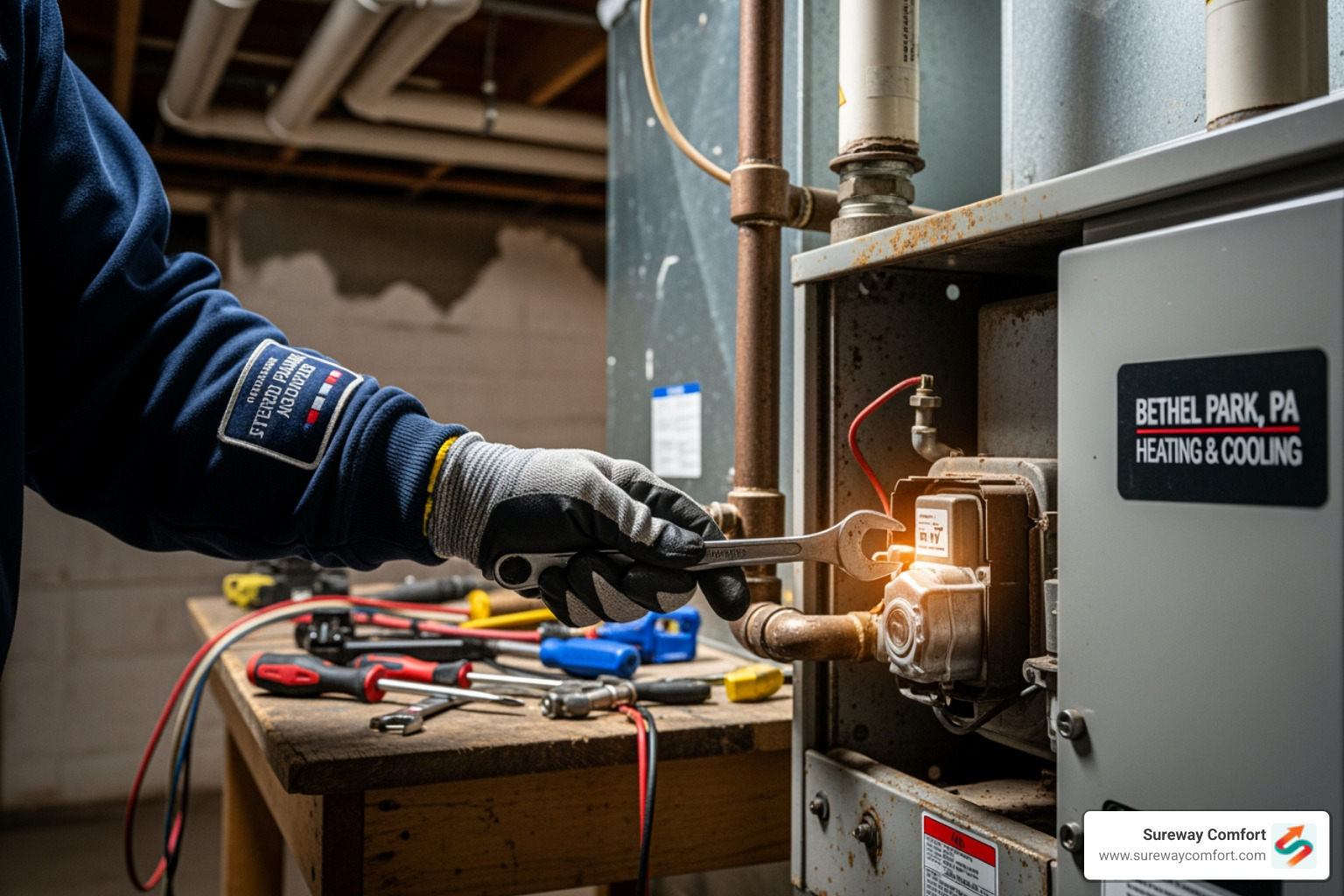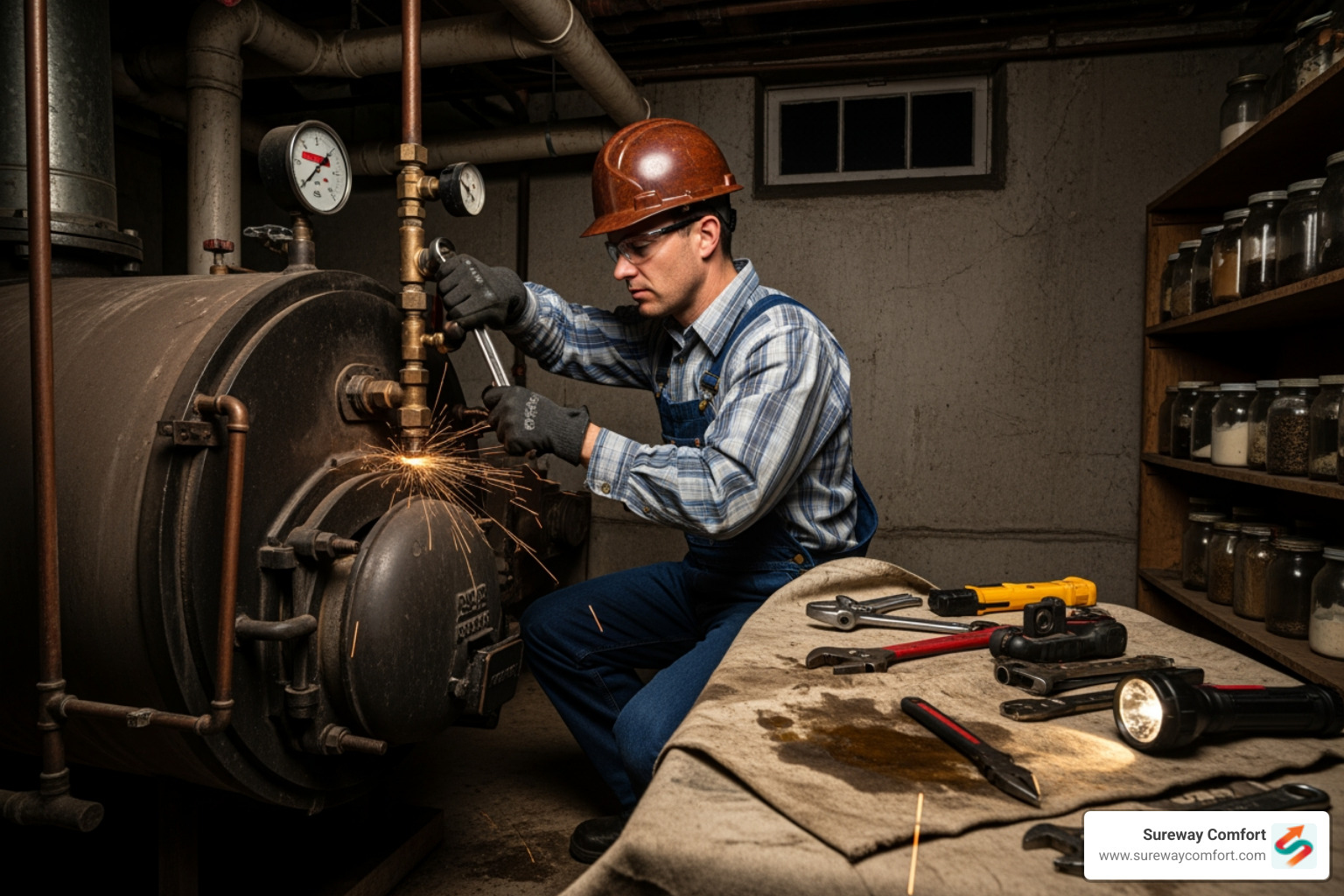A sump pump is an essential device for homeowners who want to protect their basements from flooding and water damage. Proper installation and maintenance of a sump pump can save you from the stress and costs associated with water infiltration. Understanding the complete process of sump pump installation ensures you know what to expect and how it benefits your home.
Why You Need a Sump Pump
Understanding the Importance of a Sump Pump
A sump pump is crucial for homes prone to flooding or excess moisture in the basement. It prevents water from accumulating and causing serious damage. Our professionals install sump pumps to protect your home’s foundation and reduce the risk of mold growth. By channeling water away from your basement, a sump pump helps maintain a dry and safe living environment.
Common Signs You Need a Sump Pump
There are several signs that indicate you may need a sump pump. If you notice persistent dampness or water stains on your basement walls, it’s time to consider sump pump installation. Other signs include a musty odor, mold growth, or the presence of standing water. These issues suggest that water is not draining properly, and a sump pump can provide the solution.
Frequent flooding or moisture problems during heavy rain also indicate the need for a sump pump. If your basement becomes a swimming pool after a storm, our technicians can help. We assess your home’s needs and recommend the right sump pump system to protect your basement from future water issues.
Pre-Installation Assessment
Inspection by Our Professionals
Before installing a sump pump, our professionals conduct a thorough inspection of your basement. This assessment helps us identify the source of moisture and areas where water collects. We check for existing damage and evaluate the layout of your basement to determine the most effective placement for the sump pump.
Our technicians look at the drainage system and any previous plumbing work done. Understanding these factors allows us to provide a custom solution tailored to your home’s specific needs. The inspection ensures we address all potential issues and prepare for a smooth installation process.
Planning and Choosing the Right System
After the inspection, we proceed to plan the sump pump installation. Our professionals discuss your options, explaining the different types of sump pumps available. We help you choose a system that matches your requirements and budget. Factors such as the size of your basement, frequency of water issues, and power source are considered during this stage.
Selecting the right sump pump is crucial for its effectiveness. We explain the benefits of each type, whether it’s a submersible pump or a pedestal pump. Our goal is to ensure you have a reliable and efficient system that will keep your basement dry for years to come. After finalizing the plan, we schedule the installation, ensuring we have all the necessary materials and tools ready for the job.
The Installation Process
Preparing the Install Site
Our professionals begin the sump pump installation process by preparing the site. This involves clearing the area where the sump pump will be placed and ensuring there is easy access for our technicians. We mark the spots for the sump pit and check for any existing plumbing or electrical lines to avoid damage.
Once the site is prepped, we dig the sump pit to the appropriate depth and width, ensuring it can accommodate the sump pump and liner. Proper preparation of the installation site is crucial for the sump pump’s efficiency and longevity. It ensures the pump can effectively collect and expel water, keeping your basement dry.
Step-by-Step Installation Guide
1. Placing the Sump Liner: After digging the sump pit, our technicians position the sump liner securely inside the hole. This liner acts as a barrier, keeping soil and debris away from the sump pump.
2. Installing the Pump: We then place the sump pump into the liner. It is essential to ensure the pump sits level and stable to function correctly.
3. Connecting the Discharge Pipe: Our professionals connect the discharge pipe to the pump. This pipe carries the water from the sump pump out of your basement and away from your home.
4. Sealing the Pit: Once the pump and pipe are in place, we seal the area around the liner with concrete. This step helps secure the pump in place and prevent dirt from entering the pit.
5. Electrical Connections: Our technicians connect the pump to a reliable power source. We ensure proper and safe wiring to avoid any electrical issues.
6. Testing the System: Finally, we test the sump pump to ensure it is working correctly. We pour water into the pit to activate the pump and check the discharge flow to ensure water is being expelled effectively.
Post-Installation Care and Maintenance
Immediate Post-Install Checks
After the installation, our professionals perform immediate post-install checks to verify the sump pump is functioning properly. We monitor the pump as it operates, ensuring there are no leaks or issues with the discharge flow. These checks confirm that the sump pump is ready to protect your home from water damage.
Ongoing Maintenance Tips and Advice
Regular maintenance is key to keeping your sump pump in top condition.. Here's a list of ongoing maintenance tasks:
1. Check for Debris: Regularly inspect the sump pit for any debris or dirt that could clog the pump.
2. Test the Pump: Periodically pour water into the sump pit to activate the pump and ensure it's operating correctly.
3. Inspect the Discharge Line: Make sure the discharge line is free of obstructions and drains water away from your home's foundation.
4. Check the Power Source: Verify that the pump is always connected to a reliable power source. Consider a battery backup for power outages.
5. Schedule Professional Inspections: Arrange for our professionals to inspect your sump pump annually to catch and fix any issues early.
Conclusion
A professionally installed sump pump is essential for maintaining a dry and safe basement. The process involves thorough site preparation, meticulous installation, and detailed post-installation checks to ensure the system operates efficiently. Understanding the complete process of sump pump installation and committing to regular upkeep ensures your home remains protected and dry.
If you need a reliable sump pump installation in Bethel Park or have questions about maintaining your existing system, contact Sureway Heating Cooling Plumbing today. Our experienced professionals are ready to help keep your home safe and dry!




























.avif)



